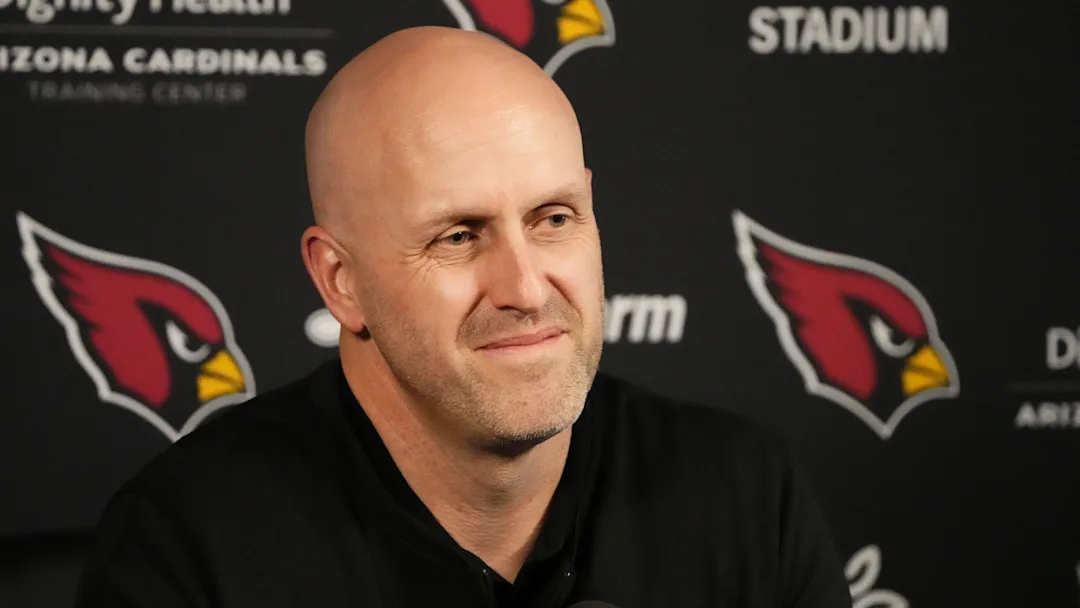The 2025 NFL Draft presents a pivotal moment for the Arizona Cardinals, but it’s one that carries far more promise than peril. For a team still in the early stages of its rebuild, with a clear need for impact talent across several key positions, Arizona finds itself in an enviable situation: multiple high picks, a deep and versatile draft class, and a front office that has already shown signs of competence and direction under general manager Monti Ossenfort. Add in the presence of a franchise quarterback in Kyler Murray, and the Cardinals are not just positioned to make a leap—they’re almost guaranteed to get better. In a draft littered with blue-chip prospects and few landmines at the top, the Cardinals quite literally can’t go wrong.
The biggest advantage Arizona carries into this draft is its draft capital. Thanks to a smart trade with the Houston Texans during the 2023 draft, the Cardinals own not only their own top-five pick but also Houston’s first-rounder, which lands just outside the top 10. With two picks in the top 15, they’re sitting on the kind of leverage that allows for multiple routes: select two potential cornerstones, package the picks to move up for a generational player, or trade down and stockpile even more assets in a draft class that’s unusually deep in key areas. It’s rare for a team with as many holes as the Cardinals to also have this much control.
This draft class in particular plays directly into Arizona’s hands. Wide receiver, offensive tackle, edge rusher, and cornerback—four of the most premium positions in football—are not only deep this year but loaded with players who fit the Cardinals’ needs and timeline. They could go several directions with their top pick and come out with a player who instantly becomes one of their top three on the roster.
Take wide receiver, for instance. Marvin Harrison Jr., Malik Nabers, and Emeka Egbuka headline a receiver class that has star potential written all over it. Harrison is the cleanest prospect at the position in a decade, and if he’s still available at Arizona’s pick, it’s a no-brainer. But even if he’s off the board, Nabers offers elite explosion and YAC ability, while Egbuka is a polished, NFL-ready route runner with a versatile skill set. Pairing any of these wideouts with Kyler Murray would immediately revitalize a passing game that lacked bite in 2024.
But what if they want to fortify the trenches? The offensive tackle class is arguably just as strong, led by Notre Dame’s Joe Alt and Penn State’s Olu Fashanu. Alt, in particular, would be a franchise-shaping left tackle, capable of protecting Murray’s blind side for the next decade. He’s not just a mauler—he’s a technician, with rare footwork and balance for someone his size. Fashanu isn’t far behind, offering a blend of athleticism and anchor strength that scouts drool over. Arizona’s offensive line has been a patchwork unit for years; finally landing a foundational piece could help unlock the version of Murray they envisioned when drafting him No. 1 overall.
On the defensive side, the Cardinals are also in a prime position to snag difference-makers. Jared Verse, Laiatu Latu, and Dallas Turner headline a potent class of edge rushers. Each brings a slightly different flavor to the position—Verse with his raw power and motor, Latu with elite bend and instincts, and Turner as a toolsy freak with massive upside. Arizona has long lacked a dominant edge presence since the days of Chandler Jones, and drafting one of these prospects would instantly upgrade a pass rush that struggled to finish plays in 2024.
Even if they decide to address the secondary, there are no bad options. Kool-Aid McKinstry, Cooper DeJean, and Kalen King are all plug-and-play cornerbacks with high ceilings. McKinstry, in particular, fits the mold of a true CB1 with the size, speed, and discipline to go toe-to-toe with the NFC’s best receivers. The Cardinals finished near the bottom of the league in pass defense efficiency last season, and investing in a young lockdown corner would go a long way toward fixing a leaky back end.
Perhaps more important than positional depth is the reality that the Cardinals’ timeline isn’t centered on a “win-now” window. They don’t need to force any picks based on immediate contention, which means they can afford to swing for upside and long-term development. This freedom reduces the pressure to chase need over value, something that often derails rebuilding teams. Arizona has the breathing room to play the board as it falls, rather than contort itself to fill every roster hole in one offseason.
Another factor working in Arizona’s favor is the flexibility provided by Kyler Murray’s resurgence. After returning from injury in 2024, Murray showed glimpses of the dynamic playmaker he was early in his career. He’s not without flaws, but he remains one of the few quarterbacks in the league capable of creating explosive plays off-script. More importantly, he’s locked in as the starter going forward, which means Arizona isn’t part of the quarterback sweepstakes. In a draft where teams may jockey to trade up for names like Carson Beck, Shedeur Sanders, or Jalen Milroe, the Cardinals can sit back and watch the chaos unfold—possibly even benefit from it if a QB-needy team wants to trade up to one of their picks. That opens the door for even more draft capital.
Ossenfort’s approach since taking over as GM has also inspired confidence. Unlike previous regimes, which often made splashy but shortsighted moves, Ossenfort has been measured and methodical. Last year’s draft haul, headlined by Paris Johnson Jr., BJ Ojulari, and Garrett Williams, already looks promising. Johnson showed flashes of becoming a top-tier tackle, while Williams, once fully healthy, looked like a steal at corner. If the 2025 class builds on that momentum, it could represent the true turning point in Arizona’s rebuild.
Even the intangible elements are tilting in Arizona’s direction. The fan base is starved for hope after years of mediocrity and mismanagement. The organization has finally committed to a long-term vision, embracing youth, flexibility, and smart cap management. Head coach Jonathan Gannon, though still a work in progress, has at least instilled a level of accountability and effort that was often missing under previous regimes. The culture shift is real, and this draft could serve as the moment it all crystallizes.
If you try to poke holes in the Cardinals’ outlook, there aren’t many to be found in the context of the 2025 draft. Sure, they could miss on a player. Every draft carries risk, and not every top prospect pans out



